
Transcription
My Life on Five Acres
BLOG
Joaquin Jordan J-27227
#10
Distillation of Addiction/Recovery/Education:
March 22, 2012
The following is an excerpt of a paper I wrote as part of a proposal for a chemical dependency and relapse prevention program here at Mule Creek State Prison. It is literally a product of my life's experience to date. The complete paper is over 80 pages long and evolved over 5 months, 95 hours and 35 revisions. I am currently developing a curriculum based on the content and what I have completed so far has been well received within the group. This is my offering to the future as a way of paying on the interest of my karmic debt.
As I was nearing the completion of the paper, I was of the thought that this was "My life's work". But when I finished the paper, a book I had ordered arrived and I realized this was only the beginning. The book was Dr D Siegel's Pocket Guide to Interpersonal Neurobiology. Mindsight and The Developing Mind had already heavy influenced my thinking, but now I was rejuvenated with regard to developing a curriculum specifically for rehabilitative and addiction programming that combines the framework of interpersonal Neurobiology and the skills of Dialectic Behavior Therapy that is my next project. :)
DBT informed Twelve Step programming
DBT informed Twelve Step programming is a natural evolution of cognitive behavioral treatment and should not be considered new or emergent because at its core, it is a re (union) of twelve step philosophy with its psychological origins, roots that stem from Dr Carl G Jung's "principle of opposites" and include his consultation with Roland Hazard at the Burgholiz Mental Hospital and proceed with the work of William James, specifically Varieties of Religious Experiences, which was used as a source by Bill Wilson as he worked on Chapter 5 "How It Works" of the original Big Book. DBT informed Twelve Step programming seeks to keep the shaping principles, but interject DBT skills within any individual recovery method in a effort to provide the recovering offender the ability to discriminate and withstand the random, frequent, maladaptive and unconstructive reinforcement present within his environment. This integration is not intended to dilute the significance of the spiritual outcome promised by the Twelve Steps with psychological theory, but to allow this process to proceed along psychological principles. This process is important because the recovering offender's sense of spiritually is the soil within which the seeds of personality transformation are nurtured.
Formal 12 Step work is an arduous process that demands commitment and strength. It has been "tradition" for this work to be "white knuckled and gut wrenching" as some sort of rite of passage, but this has the tendency to make recovery similar to addiction, something dreaded and feared. There is no need to suffer in recovery and a core premise of DBT is developing the means to suffer less through emotion regulation. When people are provided the means to SKILLFULLY WORK the 12 Steps, responsiveness and success increase. Recovery is possible for anyone, but it is the manner of recovery that determines its sustainability. Fishbien and Sheppard suggest that "interventions that modify brain functioning so as to enable acquisition of cognitive skills, regulate emotion, and behavior self-control would likely have long-term positive impact on reducing substance abuse risk."
DBT informed Twelve Step programming operates on the overarching
Within DBT informed Twelve Step programming, DBT skills work as an integrated whole as depicted in Figure 1. Mindfulness is the hub and the core element of DBT. Every other skill is supported by and revolves around mindfulness.
Each skill is a strand that with practice produces a material that is woven into the emotionally torn fabric of the recovering offender's life.
This integration provides a standardized skill repertoire addressing the following coping themes of substance abuse treatment: (Marra 2005)
1. Fighting with urges
2. Tolerating affect
3. Future satisfaction and the utilization of artificial pleasure
4. Focus on physical responses
5. Emotion focused rather than solution focused coping
6. Difficulty shifting attention from arousal producing stimuli
DBT informed 12 step programming targets the emotional aspect of internal and external triggers, validation and meeting of needs, increasing of positive activities, craving and withdrawal symptoms and harm reduction strategies. (Marra 2005) These are all issues traditionally addressed with the aid of sponsors, however, DBT skills once learned are easily generalized and the skill set is useful in every aspect of the offender's recovery and rehabilitation.
The ultimate goal is for the recovering offender to transform himself from destructive addict to fully functioning human being with a secure, constructive, productive sense of self. DBT informed 12 step programming promotes, through use of its principles and methods, the harnessing of the "eight domains of integration" as conceptualized by Dr. Dan Siegel. The domains are:
1. Consciousness Integration
The focusing of attention in order to utilize the power of awareness to promote the creation of choices and opportunities for change.
2. Horizontal Integration
Utilizing the power of Neuroplasticity to promote brain integration "can give us a newly coherent sense of our life story and deeper insights into the nonverbal world of ourselves and others."
3. Vertical Integration
"From head to toe and back again, vertical integration links these differentiated areas (cortical and sub-cortical) into a functional whole."
4. Memory Integration
The integration of implicit memory and explicit memories; "The more we can shine a light on... the free-floating puzzle pieces of the past - the implicit memories - and allow them to become explicit, the more we can free ourselves to live fully in the present..."
5. Narrative Integration
Weaving the narration of the left hemisphere with the autobiographical memory of the right hemisphere in order to "make sense of our lives in a deep, integrative manner."
6. State Integration
The integration of fundamental drives and needs, such as closeness, solitude, autonomy, independence, care giving and mastery, in order to "move beyond past patterns of adaptation and denial to become open to our needs and able to meet them in different ways at different times."
7. Interpersonal Integration
"The 'we' of well being... see how past adaptations are restricting current relationships and then allows us to open ourselves safely to others."
8. Temporal Integration
"Uncertainty, impermanence, mortality: These are profound challenges presented to us by the prefrontal cortex, which gives us both our sense of time and our ability... Temporal integration enables us to live with more ease and to find comforting connections in the face of uncertainty."
DBT informed 12 step programming address the multiplicity of neurological and psychosocial issues contained within the recovering offender's condition in an elegant manner easily delivered to a population that is primarily concerned with solutions that are practical and applicable to their specific conditions.
STEP 1
I admitted I was powerless over my compulsive, maladaptive, and destructive reward seeking behavior and as a result I had become unable to manage my life. (Willingness to change)
DISCUSSION:
Step 1 it is the foundation of recovery and a complete understanding and acceptance of this step (powerlessness) helps to motivate the recovering offender to learn how to stay recovered. Step 1 is not about acknowledging and assuming the label of addict. Its focus is the admission of powerlessness by the recovering offender. There is a significant emphasis on education in this step because exposure to new information will contribute to the development of values and beliefs that will be needed to progress through recovery.
It is very important for the recovering offender to understand powerlessness is directly related to the continued use of substances and this behavior biologically impairs the executive functioning of his brain. Understanding this point requires education regarding the reward/reinforcement pathway (mesolimbic dopaminergic reward pathway) and its operation, which is the part of the brain most affected by psychoactive drugs. This education includes explanations regarding how this system imprints the memories of pleasure/satisfaction as well as memories of pain relief and its task of reinforcing behavior ("Do it again, do it again") when activated by survival needs or controlled substances. This is a very important concept for the offender to understand because it removes the aspect of his addiction being a moral failing and gives him the opportunity to form new perspectives regarding his powerlessness. The learning of this lesson is critical to sustaining the effort and developing the belief (Step 2) needed for continued recovery. If he fails to accept that he is powerless over his addiction, relapse is highly likely.
Furthermore, the offender in recovery must acknowledge that he has engaged in behaviors which have become beyond their ability to control, regulate or moderate and the sustaining of these behaviors has resulted in lying, stealing, cheating, begging, borrowing and/or victimizing of others. This inability (powerlessness) directly impacted biological, psychological, and/or spiritual factors in his life and rendered him incapable of engaging in constructive and productive employment, familial and social practices. This means specifically recognizing the wreckage of the recovering offender's personal life, the years of incarceration, ruined relationships, and the ragged quality of his life. Even though there may be factors that were not his fault, every one of the decisions he has made contributed to the problems he is completely responsible for solving, such as the problems caused by the behaviors he acquired during addiction.
Finally, the recovering offender must understand and accept that there is no "safe way" to use and he must stop using all substances including alcohol, before he can begin to recover and stay recovered.
STEP 2
I came to believe that a Power greater than myself could restore me to sanity and provide the means to manage my life. (Believe in change)
DISCUSSION:
Step 2 is a process where the recovering offender accepts, AS FACT AND TRUTH, that there is information, processes, and people that possess knowledge, methods, and abilities greater than he currently possesses and that accepting instruction, assistance, and help from the previous, will give him the ability to re (gain) order and meaning in his life. The keys to the program are the 12 steps and the key to the 12 steps is belief and the key to belief, is understanding. This understanding is in regard to the offender no longer believing the use of substances is the answer to quieting the mental and emotional "noise" which results from the inability to regulate emotional distress.
It is very important for the recovering offender to believe recovery is a choice available to him. Belief is defined as, conviction of the truth of some statement or the reality of some being or phenomenon especially when based on examination of evidence. The EVIDENCE supporting the possibility of recovery surrounds him in groups, is articulated in information and is demonstrated by the use of the tools with which he is provisioned. This belief rests on the knowledge obtained by working the previous step, which clearly gives the recovering offender the necessary information to develop this new and necessary belief in his capacity to recover, because belief and behavior are closely related. Prisons are full of people who believed they could commit their crimes and get away with it. At the same time there are millions of people outside of prison who are free because they believe that crime is wrong and not necessary and that they CANNOT commit crime and get away with it. The recovering offender has to change his core belief from one of hopelessness to one of faith, hope, and trust. Believing, to be effective, must be directed to a specific action.
The use of the word THAT is cognitively based and speaks to a desired result and is the gateway to another state of belief, this subtle use of language may seem inconsequential but it is very important to communicate the distinctions to the recovering offender in order to clearly demonstrate the utility of language in describing and shaping experience. The recovering offender must acquire a BELIEF IN the ability of his higher power to restore him to sanity, not just a BELIEF THAT he can be restored. Differentiation of these two function words (IN versus THAT) is critical towards motivation and perspective. This use of IN is not only a predictive preposition, but it implies a context of positive emotional regard. Simply put, it is a belief, which is closely linked to emotion, such as their belief in a higher power or family member, whose essence is of security and faith.
In addition, the recovering offender must develop a definition of power that is not limited to an offender's concept (or lack thereof) of a Higher Power. The power of this step focuses on the manifestation and concrete expression of information, processes (groups), and people (fellowship) that have the capacity and ability to help the recovering offender begin and effect a process of restoration (to make whole or repair) and the ability to radically change personalities and behaviors. How does the recovering offender know this POWER is working in his life? There are two ways, through spiritual experience or spiritual awakening. For our purpose we will define SPIRITUAL as: relating to, consisting of, or affecting the spirit, which is our life giving force. A spiritual experience is sudden and dramatic. A profound and instantaneous change in a person's personality that is obvious to anyone. More common is a spiritual awakening. This is gradual and subtle. It occurs as the recovering offender learns and applies the program. It is based on new information and education. The recovering offender going through this process may not realize it at first, but others see changes. The recognizing of these changes by the recovering offender is the spiritual awakening. This happens when the recovering offender becomes aware of the changes to and in him resulting from working the program.
A core theme of this step is determining and acknowledging the limits of the recovering offender's thinking and accepting the recovering offender's best thinking sustained his addiction and brought him to prison. This point must frequently and concretely be reinforced to the recovering offender. Furthermore, he must understand that in order to recover he is going to need a level of thinking more complex than his previous and/or current level. All the previous elements serve to promote cognitive pacing with regard to furthering his development and recovery.
The recovering offender must also have a working definition of what is sane and idea of the person he wants to be. This requires the concrete defining and identification of behavior which is conducive to inclusion and acceptance into society, which must include constructive and productive employment, familial and social practices.
STEP 3
I made a decision to turn my will and my life over to the care of my Higher Power, as I understood it. (Decision to change)
DISCUSSION:
Step 3 is the process of the recovering offender making a decision. The decision to turn his will and life over to God is imbued with great power because it is counterintuitive for people in general, but addicts specifically, to relinquish their sense of control. If it was a natural inclination to submit and concede powerlessness, there would be no power in that choice. This choice, at its core, is the forming of a partnership between God and the recovering offender. God is the CEO of the company and the recovering offender is responsible for carrying out the policy (direction) of the CEO in the everyday operations of the company. This step is enabled by trust and the group fellowship provides concrete examples of others who trust their God's ability to care for them.
The power of choice is very important in life and the offender in recovery MUST NEVER disregard the RESPONSIBILITY that comes along with his ability to choose.
Responsibility is that relation of NECESSITY that a recovering offender establishes or recognizes between himself and his own action, before the action takes place as well as after it has been performed. The relation between the recovering offender and the action already performed involves ownership and corresponds to the notion of accountability (i.e. Is it (action) necessarily mine?) ONLY when the action is recognized by the recovering offender as necessarily his, either in the sense that he must perform it or in the sense that the performed action is forever part of his moral experience is there responsibility. The key element in the definition is necessity. (Augusto Blasi)
Humans possess free will (direction) and are not compelled to worship or be obedient to a higher power. However, there is a tendency for humans to forfeit their free will (direction) to allow maladaptive SELF-will to assume control. What is maladaptive self-will? A useful acronym for maladaptive self is Selfish Ego Lying Frequently. No sane person would willingly allow a selfish, egotistical liar to have control of their life, yet when the addict is operating under self-will (direction), that is what happens. Maladaptive self-will (direction), WILL NOT correct maladaptive self-will (direction). It has no interest in giving up "its" power. The only way for the recovering offender to change DIRECTION is to first stop using and then take action by choosing to surrender to God's Will (direction). The offender in recovery is not giving up power; he is exercising his power (free will (direction)) in the most constructive and productive way.
The recovering offender must be given a concept of how God's Will is manifested in the physical realm. One concept posits that it is through the scriptures of religious practices and interpersonal interactions with others. All of which is processed within the mind. The mind is the switchboard that routes all incoming and outgoing messages. God's direction is ever present but we must choose to follow it, one must consider God's as a force upon physical lives (breathing/heart beating). For example, attempt to hold your breath for 10 minutes. It is impossible; at some point the autonomic system of your body will compel you to draw breath. That's God's will on our physical, the force that enables cells to replicate, the force that powers our heart, and the force that keeps us breathing. Having depended on and taken for granted God's direction regarding his physical needs, the surrendering of the recovering offender's will is depending on that same direction to guide his mental life. That is why it is important for the recovering offender to keep his mind free from substances that alter and interfere with his ability to exercise his free will in order to be capable to follow God's Will. When he chooses to use chemicals he is effectively forfeiting control of his life to his SELF-will and all its selfish, egotistic, deceitful behavior. When addicts use drugs, they are chemically enslaving their mind (House of Wills) to the chaos (Self-Will).
It is important to understand that Step 3 is only a decision. If Step 3 was all it took, the recovering offender wouldn't need steps 4-12. He would be "cured" with just the decision. Step 3 requires further action, if there is to be recovery. Steps 4-9 are the actions that must accompany Step 3. If the recovering offender does not change direction, his life will not change.
This step must be worked with great care, remember that people have "bet" (Pascal's wager) their souls on their religious beliefs and to question/threaten that belief is to threaten their very soul. It is important to be mindful of the following factors with regard to the recovering offender's understanding of God:
1. Many recovering offenders have not developed a personal understanding of God, based on study, contact and practice.
2. Many recovering offenders do not understand the difference between RELIGION (the service and worship of God within a personal set or institutionalized system of attitudes, beliefs, and practices) and SPIRITUAL (of, relating to, consisting of, or affecting the spirit).
3. Many recovering offenders possess a religious practice that was "passed to them" without instruction.
4. Many recovering offenders possess an understanding of God that is associated with judgment, condemnation and punishment.
A useful place to help the recovering offender develop a God concept from a spiritual aspect is the introduction of spiritual principles. This is a non-intrusive means of addressing spirituality so to not threaten or offend any preexisting religious beliefs of the recovering offender or trigger any negative expressions of PRELEARNING episodes regarding religious concepts that may be irreconcilable with recovery principles. For example is the spiritual principle of tolerance and acceptance of others who may express different core religious beliefs. Spiritual principles are inclusive within any specific religious practice and are excellent focal points with regard to the remediation of shortcomings and addressing character defects.
The will (direction) of God is the exercising and manifestation of these the spiritual principles in the life of the recovering offender. If SELF-WILL directs the addict to lie, steal, cheat, maim and wound, the formal working of this step would be to choose to follow God's wills, which directs the recovering offender to exercise the principles of honesty, integrity, discipline and love.
The working of this step REQUIRES the recovering offender to educate himself in matters that pertain to spiritual practice and if he chooses, a religious practice. In order to find a suitable spot to plant himself spiritually (outcome), he must dig some holes (process). This step is again asking the recovering offender to elevate his level of thinking.
These spiritual principles are important because they represent the foundation of new relational framework and serve as replacements for the previous addictive and antisocial values and serve as anchors and focus points during the rehabilitative process, shaping thinking and driving behavior. It is common practice to lecture recovering offenders regarding how inappropriate and antisocial many of their previous values were without any provision for or exposure to replacement values. Furthermore these spiritual principles encourage the establishment of relationships which are authentic, supportive, positive and productive which will be needed in the working of subsequent steps.
STEP 4
I made a searching and fearless moral inventory of myself. (Inventory for change)
DISCUSSION:
If done thoroughly, the previous steps (1-3) served to stabilize the recovering offender in preparation for the working of Step 4. This step begins with an action and the recovering offender decides to perform a complete and honest audit, which includes the detailing of his shortcomings, defects, and attributes. This is necessary in order to determine the circumstances surrounding his failures and his successes and provide a starting point from which to proceed to the next steps.
The recovering offender must understand SEARCHING is an in depth and thorough examination. The recovering offender must go to the places (emotion laden memories) that have been shuttered and blocked. This will require a look into the period before the onset of use, as the recovering offender will discover versions of behaviors of addiction that existed prior to his addiction and may have contributed to its commencement.
Defining fearless is an absolute requirement due to the content to the previous element. The recovering offender was fearless when pursuing his addiction; he did not fear jail, disease, abandonment, exile or even death. He must utilize that same fearlessness working Step 4, in pursuit of his recovery.
Defining what is moral is central to this step. In the simplest terms, morals can be defined as the adherence to principles of right and wrong, BASED ON A SPECIFIC SET OF VALUES. Morality is subjective and the recovering offender must define a set of values that are constructive and prosocial. This moral standard should define values pertaining to the three parts of the relational aspect of life; spiritual, personal, and social. From this standpoint he should begin to conduct a moral inventory of his life. This diagnostic check requires absolute honesty and the previous element facilitates honesty. In order to determine the direction for the future, the recovering offender must know his exact location/condition/status.
The recovering offender is conducting a moral inventory because addiction has rendered him morally bankrupt. Just as a complete audit is required in a financial bankruptcy, one is required here. The purpose of this accounting is to assess his liabilities and assets and is intended to assist the recovering offender in determining how his "nature" contributed to the outcome of his life. This inventory must be a holistic inventory of the spiritual, personal and social aspects of the recovering offender's life, in order to reveal the origins of his maladaptive behavior and provide a glimpse of his unlimited capacity for growth. This is the "grittiest" (emotionally) yet most productive work within recovery. The recovering offender begins the process of addressing the historical and current biopsychosocial factors in order to make sense of and develop a coherent narrative (autobiographical) of his past. This holistic examination is where "getting to the root of the problem" commences. This inventory is a matter of reporting and the recovering offender must be encouraged to perform this task as objectively as possible, "Just the facts".
For many recovering offenders, the pathology of identified shortcomings and defects, are like bodies in a secret mass grave. They may be buried, but the fear of discovery weighs on the conscience of the recovering offender and these secrets will keep him stuck. Step 4 transforms them into places ready for restoration and repair. This step requires the disinterment of pain filled and trauma laden memories from the depths of the recovering offender's developmental roots and once unearthed, this process of writing the inventory is a form externalizing these "facts" in order to give those artifacts a respectful burial. Once this process is completed those secret locations in the minds, hearts and spirit of the recovering offender are no longer places to keep secret and be feared. The recovering offender's denial, projection and fantasizing began as a way to defend his abnormalities and deficiencies and later they kept the reality of his choices at bay and finally became his most important tool in protecting his usage. His use of denial, projection, and fantasy became habit, a habit that must be unlearned.
STEP 5
I admitted to my Higher Power, to myself, and to another human being the exact nature of my wrongs. (Actions to change)
DISCUSSION:
The working of this step is not a confession of specific bad acts; in its simplest terms it is the recovering offender acknowledging he was a liar, thief, cheat, exploiter, abuser and relationship destroyer. The previous examples can contain a number of specific acts, but generally, most if not all behavior can be put into one of those categories.
This step is worked in a sequential manner and serves as a progressive desensitization process that is the beginning of confronting habitual avoidance and escape behaviors. Admission of the exact nature of his wrongs requires the recovering offender to have a complete understanding of his shortcomings and defects. This understanding includes the needs, motives, and gains of these behaviors.
A very important aspect of this step is its dependence on the creating, maintaining, and strengthening pro-social relationships which enable recovering offenders to build social capital. Social capital refers to relationships which are caring, responsive, flexible, interdependent, dynamic, and most importantly, voluntary. Step 5 is a three part process involving God (Spiritual), ourselves (personal), and to another (Social) because many recovering offenders have a legacy of neglect, exploitation and destruction within these relational aspects of life. There is a tendency for offenders to view relationships as disposable since many of their interactions were exploitative and self-serving and once the relationships become empty, problematic, or required a significant work or personal change to maintain, it was easier to discard the relationship. This disposable relational practice is not compatible with recovery and this step CANNOT be performed without the recovering offender being in relationship to God, himself and another.
Admission to God: This element concerns the recovering offender expanding his dialogue with God. This is a relationship that must be developed, nurtured and maintained like every other and having to have this "talk" with God is about not taking things for granted and attending to what is meaningful. This is a component of maintaining and supporting the partnership with the higher power formed in Step 3.
Personal admission: Personal admission allows for further growth and personal knowledge, and the exposure to the truth and all its emotions allows the recovering offender to experience not being destroyed by it. This works in conjunction with the process of recounting our resentments, fears and bad acts as objective facts without the subjective negative emotional soundtrack. Again this is a process of establishing a personal relationship, with oneself. The recovering offender is "getting to know" himself. Self admission and disclosure for the recovering offender is central to overcoming the fear of examination of others which is powered by the anticipation of rejection.
Admission to another human being: This element requires the participation of a person who the recovering offender absolutely trusts and considers significant to their recovery. In order to trust someone and develop the necessary relationship to perform this element, the recovering offender must engage in constructive, authentic and productive interpersonal behaviors.
An important process within this element is the dynamic of reflected appraisal which is actualized within this sequence. Citing H. S. Sullivan, Dr. Yalom states, "Sullivan contends that the personality is almost entirely the product of interactions with other significant human beings" and continues by stating "This process of constructing our self regard on the basis of reflected appraisals that we read in the eyes of important others continues, of course, throughout the development cycle."
This element is also a preparation for the resocialization process of recovering offender which results in the recovering offender experiencing a constructive interpersonal evaluation sequence which facilitates:
1. The recovering offender understanding how others view his behavior
2. The recovering offender understanding how his behavior makes others feel
3. The recovering offender understanding how his behavior shapes others' opinions of him
4. The recovering offender understanding how the previous shapes his opinion of himself
The recovering offender requires the continued constructive examination of his behavior in order to determine its appropriateness. Determining the value of others' opinions and subsequently utilizing those opinions is a very delicate process that requires the support of skilled, empathic and nurturing guidance, which is a core element of the restorative practice.
The working of this step requires the reconnection with every relational aspect because recovery is a relational centered process, as addiction was a process that destroyed relations. The recovering offender must shift his perspective regarding his relationship to relating. A shift from an I - It orientation, which is a maladaptive object relation viewing others as things to manipulate and use, to an I - You engagement which requires an empathic connection (transmitting and receiving) to others. In order for Step 5 to be worked correctly and effectively the recovering offender must do the parts in order.
A by product of this step is its ability to help the recovering offender begin to separate his behavior from his person. This distillation facilitates the recovering offender's ability to examine behavior and change behavior. This is very important as it deconstructs the common recovering offender rationalization that it was not "the real them" that abused substances and victimized others. When recovering offenders do not understand the difference between themselves as whole beings and their behavior, "change" becomes a monumental task that may seem impossible. With understanding and acceptance of the distillation concept, recovering offenders who have historically been labeled as outcasts and worthless can begin to synthesize previous experience and new information into a concrete, practical and pragmatic "knowledge" for living a different life.
In addition the disclosure(s) required within this step frees the mental and emotional energy that is expended with maintaining vigilance over secrets. As stated previously, secrets keep recovering offenders stuck and this release allows for a more constructive and productive use of energy. Specifically, energy directed towards the repair and restoration efforts of the recovering offender.
In addition, there is a tendency for the discharging of guilt and shame through religious conversion, where a significant religious symbol becomes the carrier of that guilt and shame. This discharge serves as a bypass and does not address the pathology of the behavior which resulted in the guilt and shame and this "religiosity" becomes another form of defense of addictive behavior and thinking instead of addressing the contributing factors of their addiction.
Personal shame and guilt are very strong elements of resistance. Primarily, it is the lack of knowledge and understanding of the two which reinforces this resistance. This misunderstanding results in many recovering offenders perceiving the two as one. Although shame and guilt are individual and distinct they have a tendency to accompany each other.
Feelings of shame surround the recovering offender's own thoughts concerning the negative evaluation of self/behavior by others. Dr. Donald L. Nathanson, MD, states, "I suspect that shame produces a sense of an incompetent self, that there is a part of the self created by shame... Therefore it is easy to understand why the coassembly of shame affect with memory is to such a remarkable degree a self-related experience."
Within an appropriate shame system, shame can be a teacher and moderator of behavior, but most recovering offenders have not developed healthy and appropriate shame systems and suffer from debilitating shame, which negatively shapes their behavior and creates a mental and emotional paralysis that keeps the offender "stuck". Debilitating shame is sustained by errors in thinking which center on dialectical extremes, such as, belief in the idea that one knows what another is thinking or feeling, negative self-talk, and catastrophizing.
Shame and guilt play a large part in everyone's social development, but their influence tends to be discounted when discussed in relation to offenders. There is a tendency to believe that recovering offenders have no shame due to the callousness of their previous behavior. In fact, criminal conditioning and addiction serve to retard or dampen the development and/or operation of appropriate guilt and shame systems. Offenders with typical antisocial behavior tend to operate on the poles of many continuums, from the apparent shamelessness of crime to debilitating shame and guilt when engaged in recovery activities.
Guilt is about behavior. It is concrete and can be addressed with specific actions, such as acknowledgment of behavior, repentance, restitution, and reparation (Amends making). Similar to an appropriate shame system, an appropriate guilt system can also be a teacher and modulator of behavior and its development is enabled by the process of making amends and the working of steps four through ten.
STEP 6
I was entirely ready to have my Higher Power provide opportunities for me to remove all my identified defects of character. (Actions to change)
DISCUSSION:
The recovering offender is ready to actively begin the remediation work on the overdeveloped traits of his addictive personality. The recovering offender must not discount the fact that his character defects enabled him to meet some need(s) (secondary gain) but they also had a detriment on the overall functioning and quality of his life.
The readiness spoken of in these steps requires honesty, open-mindedness and willingness (HOW) to engage in the necessary work required of this step. There is a tendency to interpret this step as an instantaneous removal of the defects of character. This is not the case. The recovering offender must take four independent yet linked actions:
1. Recognize the defect to be addressed.
2. Identify both the detriments and gains of the defect.
3. Clearly understand the detriments of this defect outweighed any benefit or gain.
4. Find the appropriate means to obtain the same benefits without the negative aspects.
As recovering offender ceases engaging in behaviors that are expressions of character defects begins the deliberate practice of prosocial thinking and behavior, the principle of neural pruning is activated. Those maladaptive connections, paths to antisocial behaviors weaken and are lost and new pathways are established and strengthened. "...the more often a specific pattern is fired in response to a stimulus, the more firm the nerve assembly becomes. Hence the axiom: Neurons that fire together, wire together."
When defects of character can be viewed as overdeveloped traits, the formal working of step 6 requires the recovering offender to deliberately engage in practices that moderate those overdeveloped traits. If the recovering offender has a habit of using the truth as a weapon, he engages in the compassionate and judicious application of honesty or if recovering offenders are entitled and self-centered the practice patience and selflessness.
STEP 7
I was entirely ready to have my Higher Power provide opportunities for me to overcome all my identified shortcomings. (Actions to change)
DISCUSSION:
The recovering offender is ready to actively begin the remediation work on the underdeveloped traits of his addictive personality. This step is utilizes the same neurological principles of step 6, but there is an emphasis of "doing more".
When shortcomings are viewed as underdeveloped traits, the formal working of step 7 requires the recovering offender to deliberately engage in practices that increase those underdeveloped traits. If the recovering offender has not had a significant amount of experience with accepting constructive criticism then he engages in the practice of being humble, which is a state of being teachable or if the recovering offender has a history of lying or being deceptive, he engages in the practice of being honest and forthright.
The most important element of these steps is the actualizing of spiritual principles through the expression of behavior within the entirety of the relational aspect. This includes but is not limited to spending time in prayer and meditation. It is the active engaging of a relationship with their higher power. Additionally,the recovering offender must engage in practices targeting their physical and mental states. An essential component is the engaging of physical exercise. This directly impacts the mind and body as the result of the cerebellum coordinating both physical and cognitive moment. The recovering offender will discover their ability to think is greatly enhanced when engaged in some form of physical activities such as running or walking. Citing J. Ratey, M.D., "Motor function is as crucial to some forms of cognition as it is to physical movement. It is equally crucial to behavior, because behavior is the acting out of moments prescribed by cognition." (Page 148)
This inner work results in a dynamic process that facilitates the outer (social) expression of constructive behavior. This includes but is not limited to the recovering offender deliberately engaging in practices that focus on empathy, compassion and not exploitative interactions, specifically, the expression and actualization of spiritual principles.
STEP 8
I made a list of all persons I had harmed, and became willing to make amends to them all. (Actions to change)
DISCUSSION:
This step itself is a preparatory action where the recovering offender prepares a list of the people he has harmed and readies himself to make amends to them. It must be made clear to the recovering offender that this step only requires him to complete his list and BECOME WILLING to make amends in the future. The willingness to make amends is a significant milestone in the life of the recovering offender because it is a sign of cognitive, emotional and spiritual growth. Although this step may appear to be simple it can be complex as a result of the individual circumstances associated with the committing of harmful actions to others.
This step is an excellent opportunity to articulate the value of cycle breaking, cycles of violence, resentments, and hate because for some, becoming willing to make amends is a major obstacle and has the potential to derail their recovery. Many have harmed in response to harm and are unwilling to give up the resentments, because it is a useful means of rationalizing their anti-social behavior. "I act this way because they did it to me first", many of today's victimizers were yesterday's victims. However, that does not absolve them of responsibility for their choices, because many victims make the choice not to victimize others in response to their own victimization. Giving up these positions and acknowledging the harm without attempting to justify the action is very important to the growth of the recovering offender. Others resist the complete working of this step because they feel their actions were unforgivable and putting those people harmed by unforgivable acts, bring those acts to the surface of their consciousness.
STEP 9
I made direct amends to such people wherever possible, except when to do so would injure them or others. (Actions to change)
DISCUSSION:
This step provides the means for the recovering offender to engage in actions of repair and restoration regarding past wrongs. Although this step is individually and socially restorative, its restoration does not undo past harms nor reverse time; it is only a repair, a bridge to a new normal, a bridge which requires skilled hands to build.
This is a very important step and requires a very precise focus on the part of the recovering offender. Although there is a secondary gain in the form of processing guilt regarding previous actions, the primary purpose of this step is to engage in the practice of MAKING RIGHT WHAT WAS DONE WRONG.
Frequently the recovering offender engages in the working of this step with an expectation of possible forgiveness. Within the context of this step, this is presumptuous as well as potentially emotionally harmful to the recovering offender. The focus of this step is centered on the process of amends making, not anticipated forgiveness for wrongs but the righting of wrongs.
This process of amends bears spiritual fruit that is nourishing to those harmed as well as those who have harmed. This process is intended to provide the means for the recovering offender to clearly acknowledge the wrong and take direct action to make restoration and for the offended to be given the opportunity to make sense of the harming experience. If accepted by the person harmed, the amends process has the potential to make them whole (materially, emotionally or spiritually) which is nourishment from the spiritual fruit of amends making. If not, then the recovering offender derives the benefit from engaging in the process which in itself is nourishment from the engagement in the process of amends making. This nourishment provides the fuel necessary to continue in the practice of recovery. This is why the concept of indirect amends is important; it is another way to engage in the process.
It is of paramount importance for the recovering offender to understand that there will be people who will not forgive nor forget. It is important for the recovering offender to understand that some harm can never be repaired or restored thus the principle of the debt cannot be repaid. Therefore their efforts toward:
1. Victim's restoration
2. Service within the prison community
3. Full payment of their monetary restitution
4. The making of direct and indirect amends to their victims
5. A commitment to living a life dedicated to the cession of further victim creation
Is only an interest payment on a debt principle that is beyond earthly solvency.
The previous is the consequence of addiction and criminality and it is the responsibility of the recovering offender to understand when others have no understanding, tolerance, empathy or compassion. This understanding requires them to bring their personal best to life regardless of the circumstances. The only expected outcome from this step for the recovering offender is the expectation of healing his soul and that is directly tied to his engagement within the process.
STEP 10
I continued to take personal inventory to remain focused on my recovery and when I was wrong promptly admitted it. (Actions to change)
DISCUSSION:
This is an important step because it focuses on the behaviors of the recovering offender, which are now free of the defects of character and shortcomings expressed during active addiction.
Although the behaviors associated with his addiction have been addressed, the recovering offender is not perfect, but he is evolving and striving for behavioral consistency in accordance with recovery values and principles. With new experiences come new challenges and in a new life circumstances and behavioral characteristics for the recovering offender to address. This step requires the offender to be vigilant and maintain attention and focus to spiritual principles and recovery beliefs and values, in the evolutionary process, which his life.
This step is a continuation of the "diagnostics" check learned in step 4 and its continuance is an absolute requirement so that the recovering offender maintains an awareness and working knowledge of his cognitive, emotional and spiritual status.
STEP 11
I sought through prayer and meditation to improve my conscious contact with my Higher Power as I understood it, praying only for knowledge of its will for me and the power to carry that will out. (Actions to change)
The working of this step requires the recovering offender to fine tune a working spiritual practice. This process is aided by the experiencing of a spiritual awakening by the offender and is rooted in the experiential foundation acquired during the working of the previous steps.
The hope of this step is for the recovering offender to understand that the engagement of spiritual practice allows him to experience the uncertainties of life differently, as long as he adheres to his recovery beliefs and spiritual principles. The recovering offender is invited to further explore his spirituality by learning about specific religious practices and to refine his understanding of the differences between religion and spirituality.
The step also seeks to reinforce the purpose and power of prayer and meditation, as a means for maintaining communication with God and a sense of being centered and open and responsive to God's direction. When the recovering offender's Will is in sync with his Higher Power's Will, prayer and meditation are collaborative efforts. It is important for the recovering offender to conceptualize prayer as a process where they are actively communicating with their Higher Power and meditation as a process of being still so to receive responses and directions from their Higher Power. In addition prayer and meditation are active processes, which when practiced, allows the recovering offender to monitor themselves emotionally, mentally, and spiritually.
STEP 12
Having had a spiritual awakening as a result of these steps, I tried to carry this message to others in need, and to practice these principles in all my affairs. (Changed)
DISCUSSION:
Step 12 is the completion of a course in leadership training. A leader is defined as, "a person who leads as a: Guide, Conductor." The recovering offender, who has successfully worked the steps and is actively living the lifestyle of recovery, HAS A RESPONSIBILITY, in accordance with 12 step philosophy, traditions and principle to lead those who still struggle with or suffer in the grip of addiction. Providing this guidance is their duty and central to their recovery.
The spiritual awakening includes finding value in past experiences and being able to assemble it with the knowledge gained in recovery. This synthesis is the ultimate form of reclamation and recycling and it is the redemption spoken of in the themes of every religious practice and this potential is contained in the spiritual depths of man. This spiritual awakening states, "I've arrived, I'm here." The recovering offender has traversed the barren landscape of addiction and has arrived at the oasis of recovery.
Maintenance (service and adherence to principles) of this garden is required and the recovering offender has the necessary knowledge to provide stewardship over his own as well as provide journeyman knowledge to those embarking on the journey. Service provides the means for converting the knowledge of recovery into something of value to be shared with others.
Restorative practices are sustained by this type of altruism and the recovering offender operating within the restorative space does not ask if they will be of service to others, but seeks to determine how they will be of service. For many recovering offenders service will be their first experience in being a responsible adult. Service requires dedication to changing negative thinking, abandonment of disempowering beliefs and rejection of destructive behaviors directed at self and/or others.
This step is a powerful sustainer of productive behavior and prosocial thinking among recovering offenders actively participating in the rehabilitative process. This is the memorializing of the recovery and rehabilitative processes, practices. Restorative justice believes change is possible for the willing and committed, and that people possess within them the ability to move mountains, but they must bring a shovel and the willingness and knowledge to use it.
Within the restorative practice, having created victims, the recovering offender now gets to help in the healing process of victims. Having committed crime, the recovering offender now gets the opportunity to prevent crime, and having once embraced criminal thinking the recovering offender now challenges criminal thinking. The recovering offender's attitude and behavior does not mean he thinks he is better, it simply demonstrates he no longer thinks as an addict and criminal.
DBT Informed Twelve Step Recovery provides the tools and service in recovery provides the opportunity to utilize those tools. In return, one thing is promised; the opportunity to serve. Serving those impacted by drugs, violence and crime, willingly, humbly, constantly, responsibly, truthfully, and faithfully.
i Fishbien, D., Sheppard, M., Assessing the Role of Neuropsychological Functioning in Inmates' Treatment Response. NIJ Grant #2002-MU-BX-0013 (2002)
ii Siegel, Daniel J., Mindsight; The New Science of Personal Transformation (pp 71-75)
iii Jane Loevinger with Augusto Blasi, Ego Development: Conceptions and Theories (San Francisco: Jossey-Bass Inc., Publishers 1982)
iv Pryor, Karen, Don't Shoot the Dog: The New Art of Teaching and Training, pp 92-94 (Bantam, New York)
v Irvin D. Yalom with Molyn Leszcz, (2005) The Theory and Practice of Group Psychotherapy 5th ed. (Perseus Books, NY, New York, 21)
vi Dr. D. Nathanson, Shame and Pride: Affect, Sex, and the Birth of the Self (New York, Norton), 211-212
vii Ratey, John J., A User's Guide to the Brain, Vintage Book, New York (pp 55)
viii Merriam Webster's Collegiate Dictionary 10th edition
Other posts by this author
|
2015 oct 5
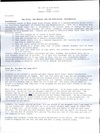
|
2015 oct 5
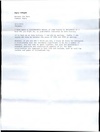
|
2015 oct 5
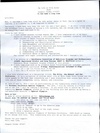
|
2012 mar 20
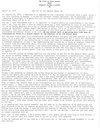
|
2012 jan 12
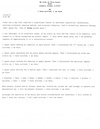
|
2011 oct 31
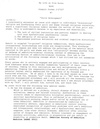
|
More... |
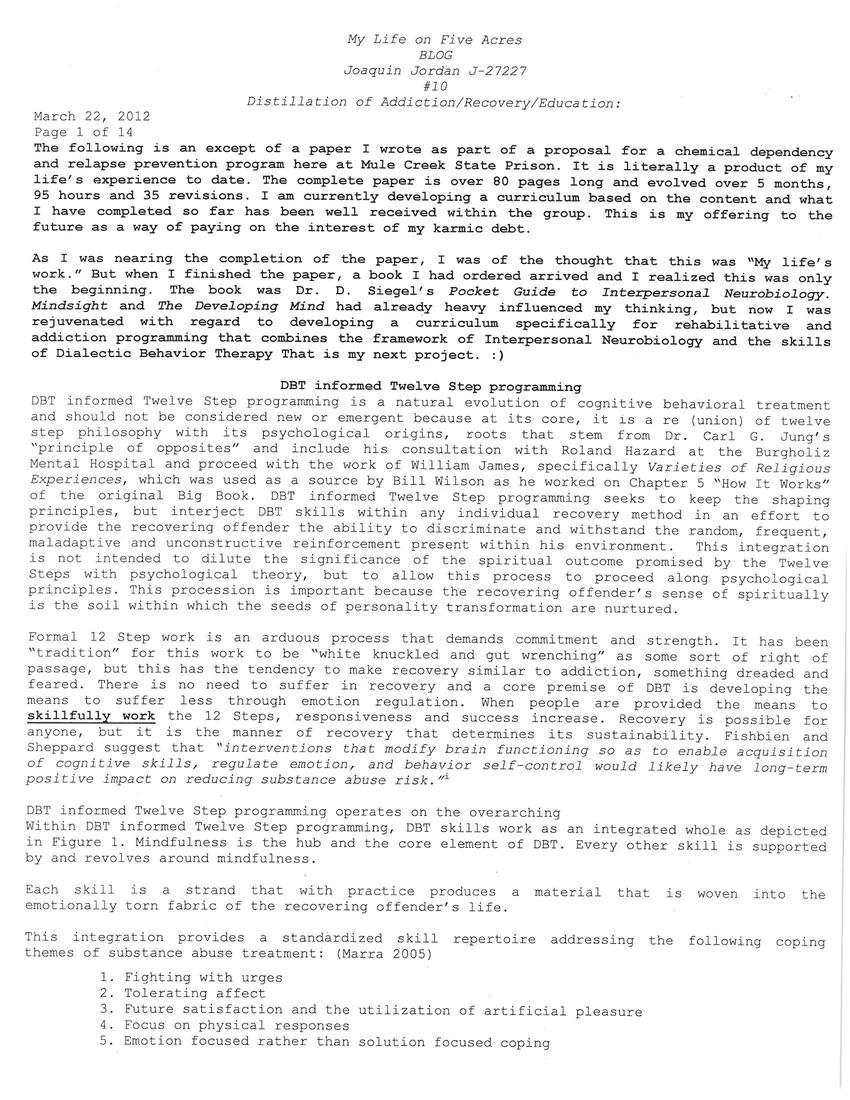
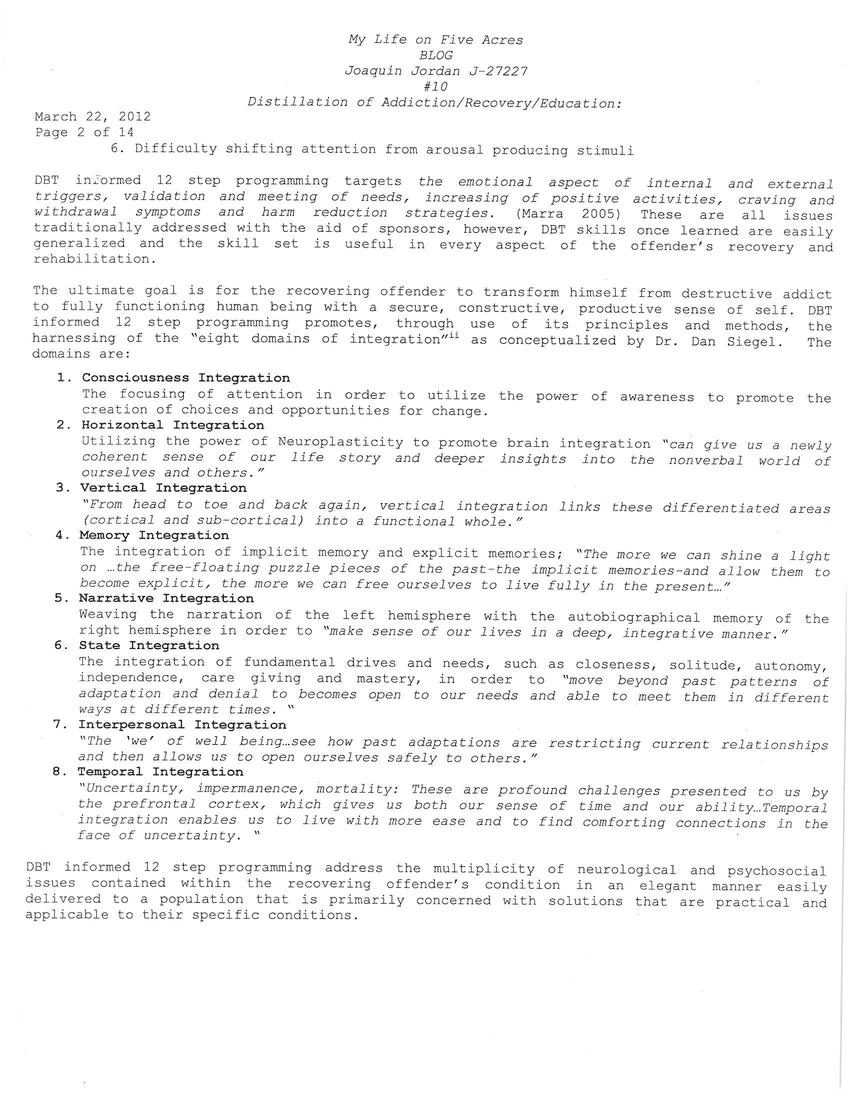
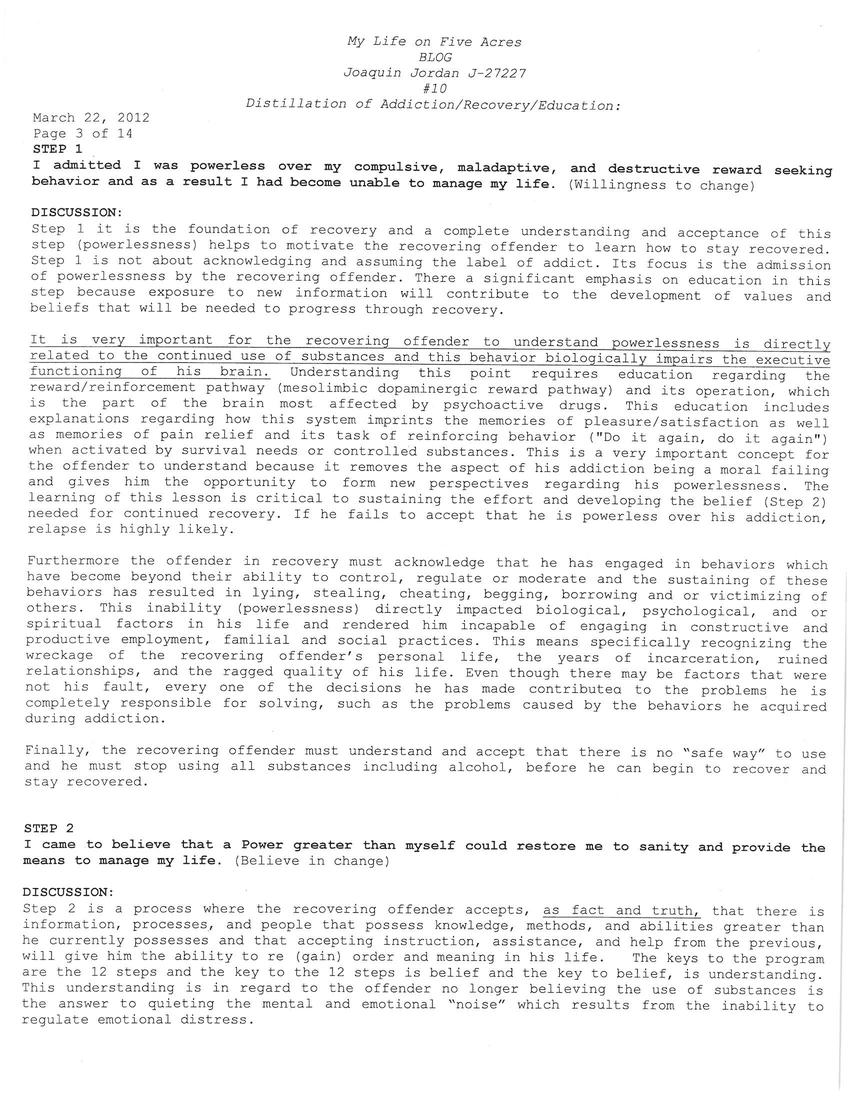
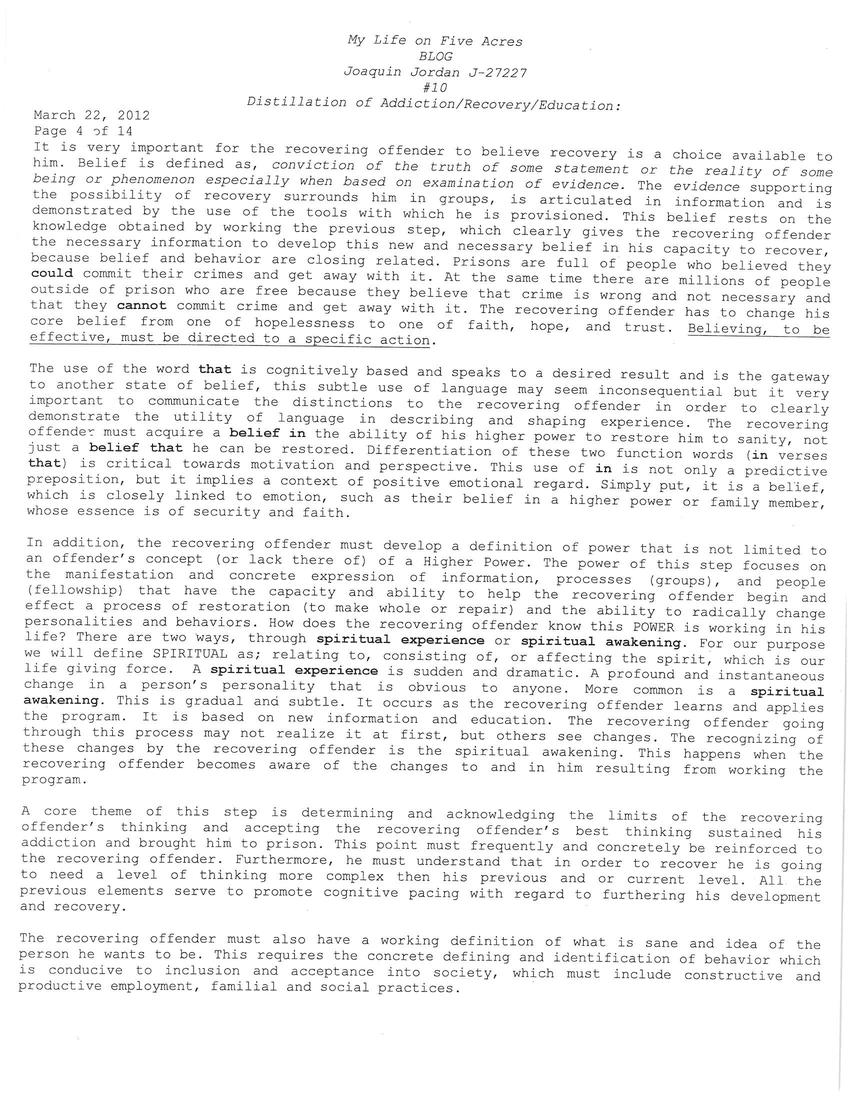
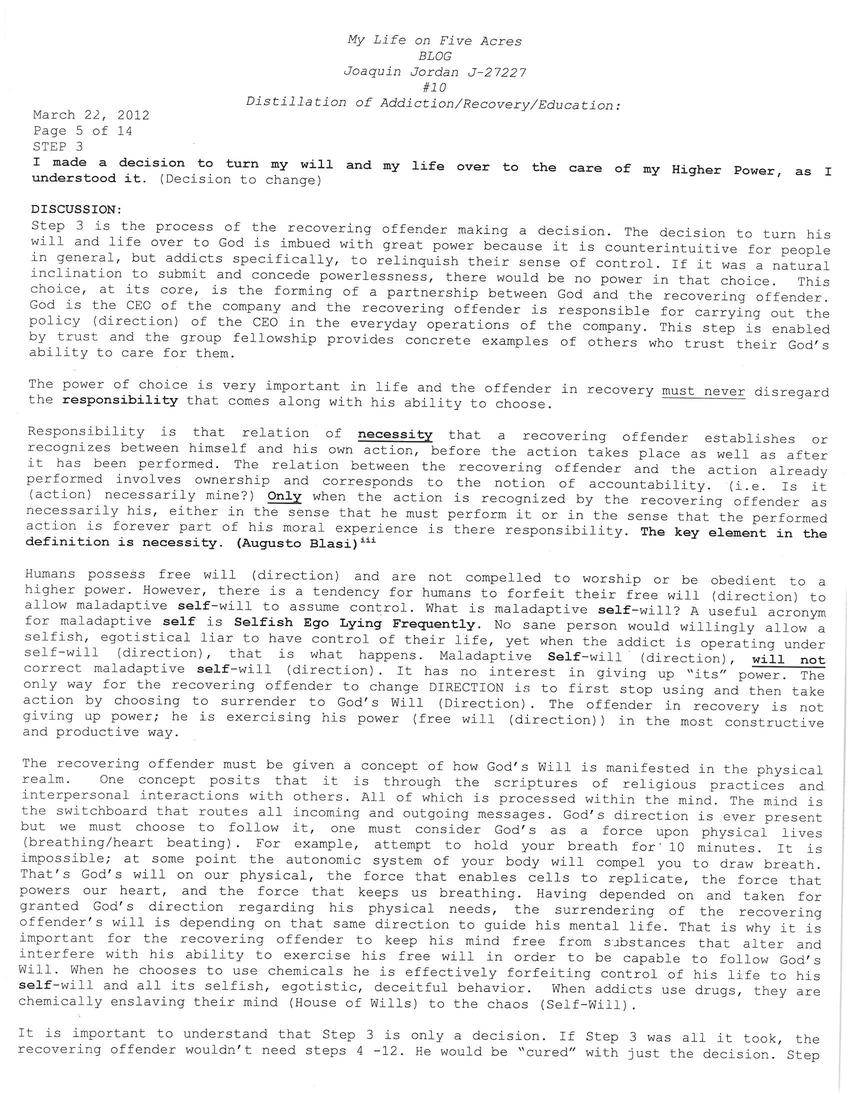
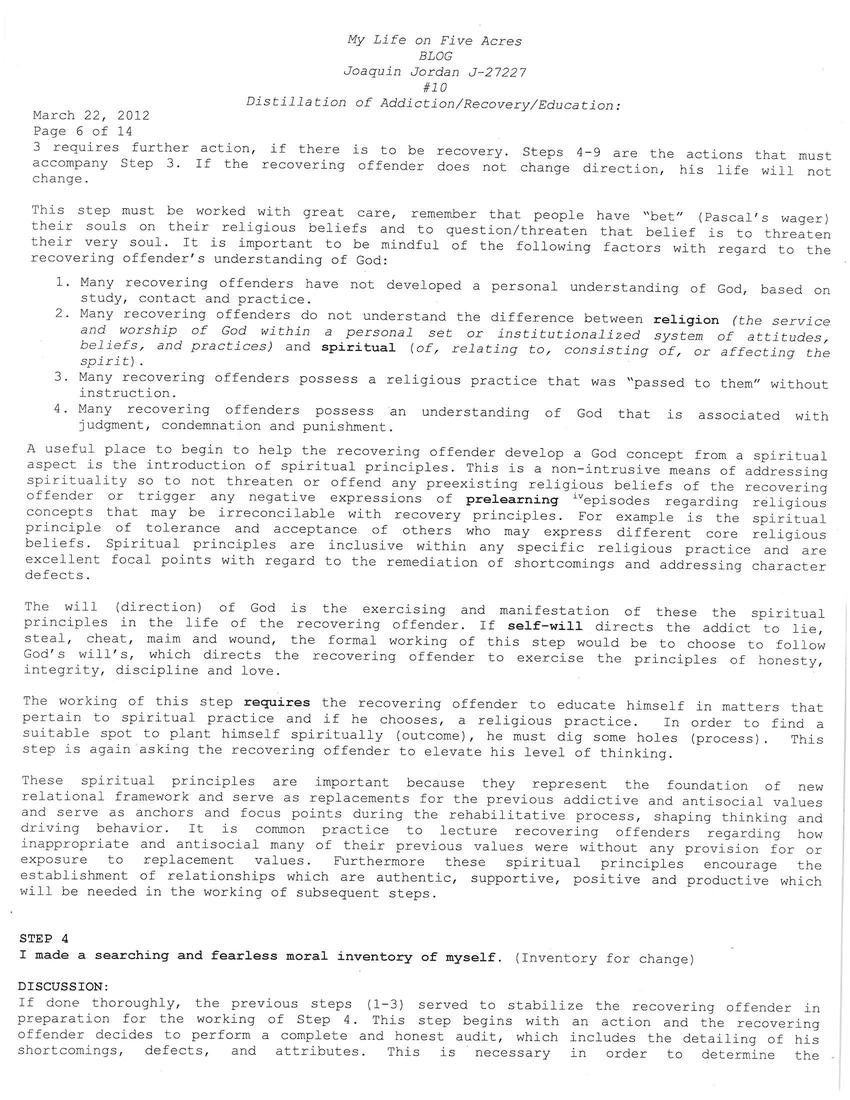

Replies